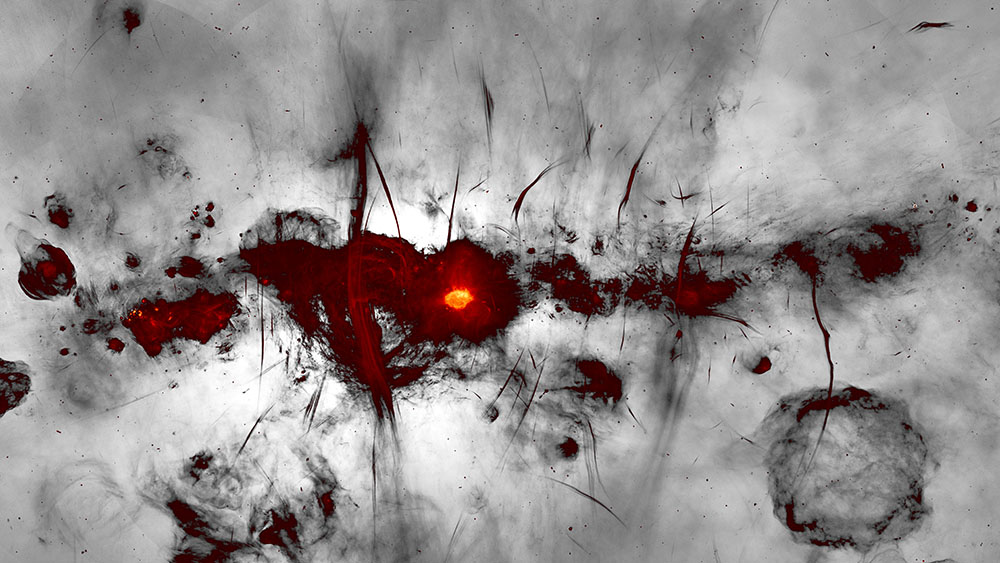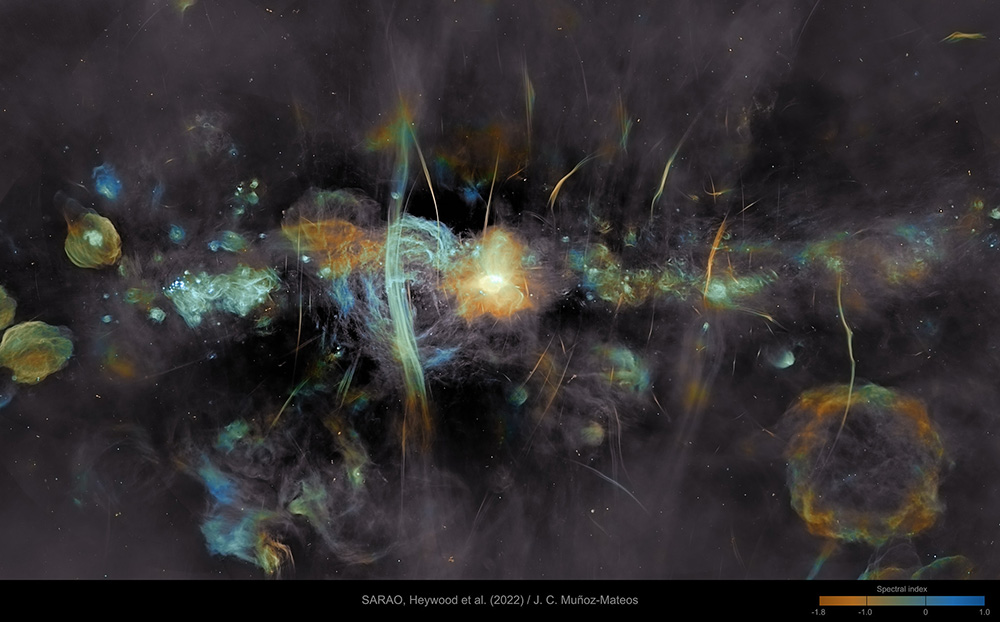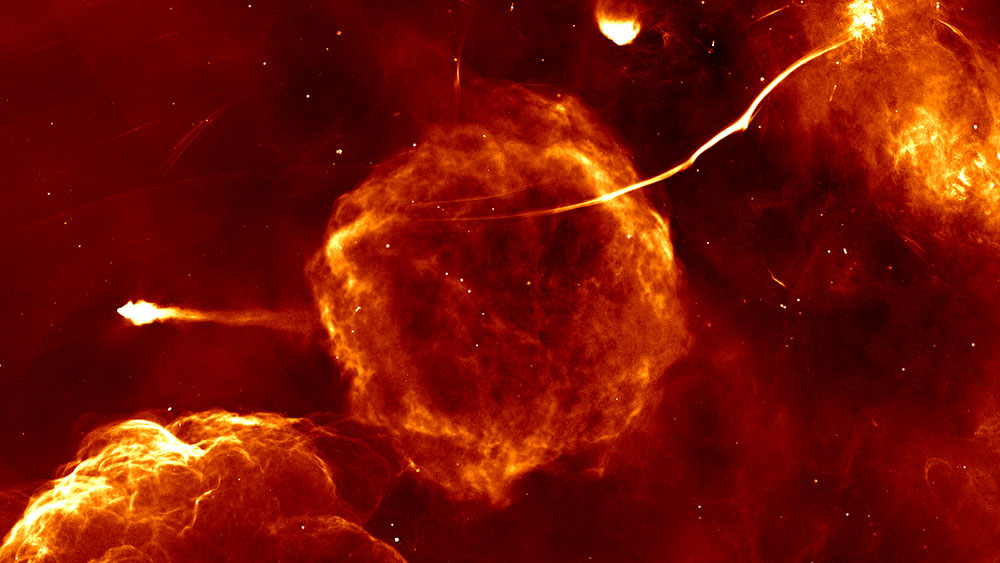A new radio survey reveals a complex and chaotic galactic center teeming with supernova remnants, star-forming regions, and mysterious filaments.

I. Heywood / SARAO
The South African Radio Astronomy Observatory (SARAO) has released a series of captivating images: A mysterious dreamscape, painted in intricate brush strokes by the universe itself, depicts the chaotic heart of the Milky Way.
Unaffected by the large quantities of dust that obscure the central galactic region, radio waves reveal a scene of striking complexity produced by the interplaying effects of star formation, high density of cosmic rays, and the foreboding supermassive black hole known as Sagittarius A*.
“I am in awe every single time I look at the images,” says Isabella Rammala, a graduate student at Rhodes University in South Africa, who has been working on the project. “It is just amazing how many details MeerKAT could capture.”
Astronomers constructed the image using the sensitive MeerKAT radio telescope, an array of 64 antennas spread over a diameter of 8 kilometers (5 miles) in the Northern Cape province of South Africa. The telescope observed a region that covers an area 30 times that of the full Moon for 215 hours. The team described the survey and its publicly released products in a study to appear in The Astrophysical Journal (preprint available here).

SARAO / I. Heywood / J. C. Muñoz-Mateos
Radio Filaments
One of the striking features in the image are numerous wispy tendrils known as radio filaments. Discovered in the early 1980s, the filaments can extend up to 150 light-years in length and appear highly organized: some come in pairs and others in clusters. Even though an air of mystery still surrounds the filaments, scientists do have ideas that could explain their origin.
One idea is that energetic particles, or cosmic rays, stream from our galaxy’s center, dragging with them the ambient magnetic field, compress it, and illuminate it. According to Farhad Yusef-Zadeh (Northwestern University), who discovered the radio filaments, the mechanism is not entirely understood. Still, it’s probably similar to the processes encountered in the solar wind.
“One thing that is a puzzle now is how you inject the cosmic-ray particles in the first place,” says Yusef-Zadeh. He led a study of cosmic filaments found in the MeerKAT image that will appear in The Astrophysical Journal Letters (preprint available here). His team found that the past activity of Sagittarius A* is more likely to have accelerated the particles. A competing explanation, a series of supernova explosions, is less probable.
The new image reveals nearly a thousand filaments, about 10 times more than previously discovered. “It is not just the number,” says Yusef-Zadeh. “We see a wide range of different sizes, the morphology is different, clustering is different.” For the first time, the numbers allow statistical studies of the filaments’ characteristics, hopefully leading to a better understanding of how they cluster as well as the peculiarly regular spacing between filaments within clusters.

I. Heywood / SARAO
Milky Way's Treasure Trove
Apart from the filaments, the center of our galaxy hosts several notable radio-emitting structures. Two vast radio bubbles emanating from the galactic center, reaching above and below Milky Way’s disk, suggest that Sagittarius A* was quite active a few million years ago. In addition, the central region is home to clusters of young, massive stars like the Arches and Quintuplet, many puffy remnants of supernova explosions, and shells of ionized gas surrounding massive stars. Many of these objects were already known, but the team, which is now busily cataloging all the objects in the image, has already reported several new sources.
“There is quite a lot of compact objects there,” says Rammala. “My main interest is identifying those that may be potential pulsar candidates.” Due to the crowding of stars, dust and gas, it isn’t easy to find these spinning neutron stars in the galactic center. Yet, astronomers are eagerly searching for them. Among other applications, pulsars could explain why we observe an excess of gamma-rays in the galactic center.
The MeerKAT radio telescope is a precursor to the Square Kilometer Array, which will be the largest radio telescope in the world. South Africa and Australia will host its thousands of dishes and up to a million low-frequency antennas. Once the array is built, it will undoubtedly reexamine the lush neighborhood of the galactic center. But for now, the astronomers’ focus is the chaotic panorama of the MeerKAT image.
 1
1









Comments
Joelanier
May 6, 2022 at 2:51 pm
Has anyone considered that this photo is actually a time composite of a moving physical process, not an instantaneous snapshot of contiguous objects. It would be interesting to normalize the photo to a single contiguous time frame to see what is really there. For example the filaments might represent a trace of a moving object. Just saying.
You must be logged in to post a comment.
You must be logged in to post a comment.